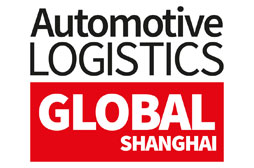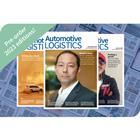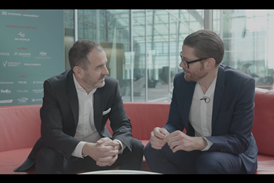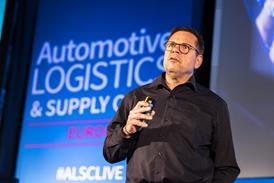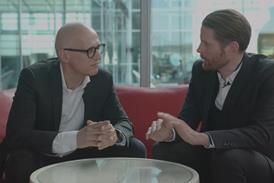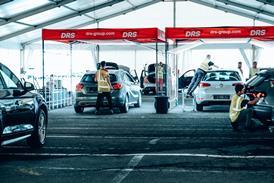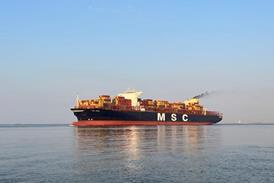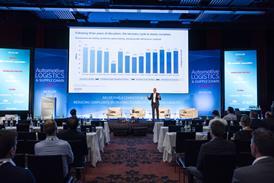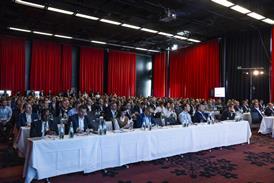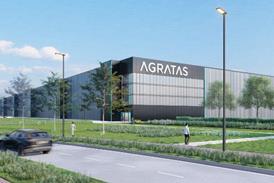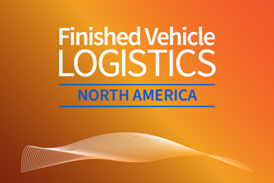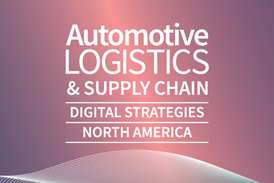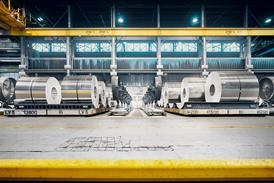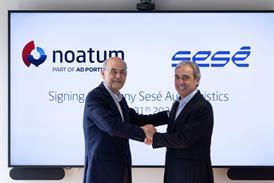Features – Page 5
-
 Article
ArticleAL FVL Spring 2022 Digital Edition - Sailing towards a more sustainable supply chain
The spring digital edition of Automotive Logistics and Finished Vehicle Logistics magazine is out now. It features interviews with Toyota and Volvo, as well as an overview of activity at the European vehicle handling ports
-
 News
NewsCarrypicker startup bets on artificial intelligence
An artificial intelligence system from the Hamburg-based startup Carrypicker is creating climate-friendlier logistics with smart scheduling of partial loads and routes. No dispatcher could ever match its performance.
-
 News
NewsLocal battery production promises to re-industrialise Europe
Localising lithium-ion battery production in Europe through greater vertical integration does not just promise a more secure battery supply chain. It could play a major role in the industrial salvation of a market that has lost its competitive footing against stronger Asian rivals in the race to a more sustainable future of mobility. What is needed to make good on that promise is strong collaboration amongst the companies involved in securing the future of electric vehicle production.
-
 Article
Article[Whitepaper] Tracking every part – How RFID enables better automotive supply chain visibility
Download this whitepaper to learn how using RFID technology for automated parts identification can help automotive manufacturers mitigate supply chain disruption, reduce inventory, better manage variety and ultimately increase profits.
-
 Article
ArticleAn ongoing crisis for terminal throughput
Supply chain delays that were initially viewed as temporary hiccups have now morphed into a prolonged crisis as global trade dynamics have been upended
-
 Article
ArticleA shift in priorities for the supply chain
Ongoing disruption in the automotive supply chain has triggered a focus on supply chain visibility and robustness as the means to secure healthy global networks
-
 Article
ArticleA visible improvement at Nissan
Nissan North America is putting in place more strategic supply chain processes backed up by the latest technology to provide better visibility and predictive analysis in the delivery of its vehicles
-
 Article
ArticleAL FVL Winter 2021 digital edition – Vision80: a new line of sight for Lotus Cars
The winter edition of Automotive and Finished Vehicle Logistics magazine is out now, featuring an in-depth focus on the fast-paced transformation at Lotus Cars. Michael Dickinson, executive director of supply at the high-end sportscar maker, explains how integrating supply chain functions and scaling operations will put Lotus on the map. ...
-
 Article
ArticleStart-up pace, high-end experience at Lotus
Lotus Cars is charging ahead on its transformation into a globally recognised sportscar maker. Michael Dickinson, executive director of supply, explains how integrating supply chain functions and scaling operations will put the company on the map
-
 Article
ArticleA more reliable rail network for North America
At this year’s Finished Vehicle Logistics North America conference KCS president and CEO, Patrick Ottensmeyer talked in detail about his company’s merger with Canadian Pacific
-
 Article
ArticleE-book: Productivity gains in real time – Unlocking ROI in vehicle logistics tracking solutions
Download this free e-book to learn how the return-on-investment for next generation real time location services has changed for finished vehicles in the post-cloud, post-AI technology landscape, with significant cost, operational and time advantages for OEMs compared to legacy systems. In partnership with Cognosos.
-
 Article
ArticleLocalising the balance of power at GM
GM is putting its money where its mouth is when it comes to stated goals for electric and autonomous vehicle production in North America. Closer integration with its battery suppliers is key to success, as is its strategic alliance with Honda, writes Marcus Williams
-
 Article
ArticleAL FVL Autumn 2021 digital edition – Moving forward together through disruption
The autumn digital edition of Automotive Logistics and Finished Vehicle Logistics magazine is out now, featuring a four-part, in-depth special on Renault Group, in which its top executive for supply chain and logistics, Jean-François Salles, explains the supply chain revolution underway at the carmaker
-
 Article
ArticleSustainable supply chains make for sustainable business models
Renault carbon reduction targets will be a challenge for logistics, but the carmaker is working on projects for alternative fuels, transport innovations and new partnerships in the circular economy.
-
 Article
ArticleEvery part you make, every car you take, we’ll be tracking you
Renault is revamping IT systems in supply chain, moving to real-time tracking and integrating industrial data with, supporting AI solutions and the rollout of mobility services, according to Jean-François Salles
-
 Article
ArticleStrengthening S&OP to make sense of supply chain chaos
Sales and operations planning is becoming the lynchpin in Renault Group’s ability to make short and long-term decisions across its operations and supply chain.
-
 Article
ArticleThe new ‘never normal’ needs a revolution in supply chain at Renault Group
Supply chain disruptions, sustainability and digitalisation are changing how Renault manages its supply chain. Global supply chain VP Jean-François Salles explains its developing strategy in this four-part special.
-
 Company Content
Company ContentElectrifying Europe: EU ‘Fit for 55’ legislation will transform the automotive supply chain
The EU’s latest salvo to mitigate against climate change will eliminate ICEs and transform automotive supply chains across Europe and beyond
-
 Company Content
Company ContentTaking charge of battery supply at Ford
Ford has some very ambitious targets for pure battery electric vehicle production in the US through to 2030 and that includes a more vertically integrated battery supply chain.
-
 Analysis
AnalysisCarbon-neutral supply chain a priority for Volkswagen
Volkswagen is making a concerted effort to make the way it moves its vehicles as sustainable as the electric vehicles it is moving. A good example is seen in the export of ID.4 from Germany to the US, as Marcus Williams finds out
